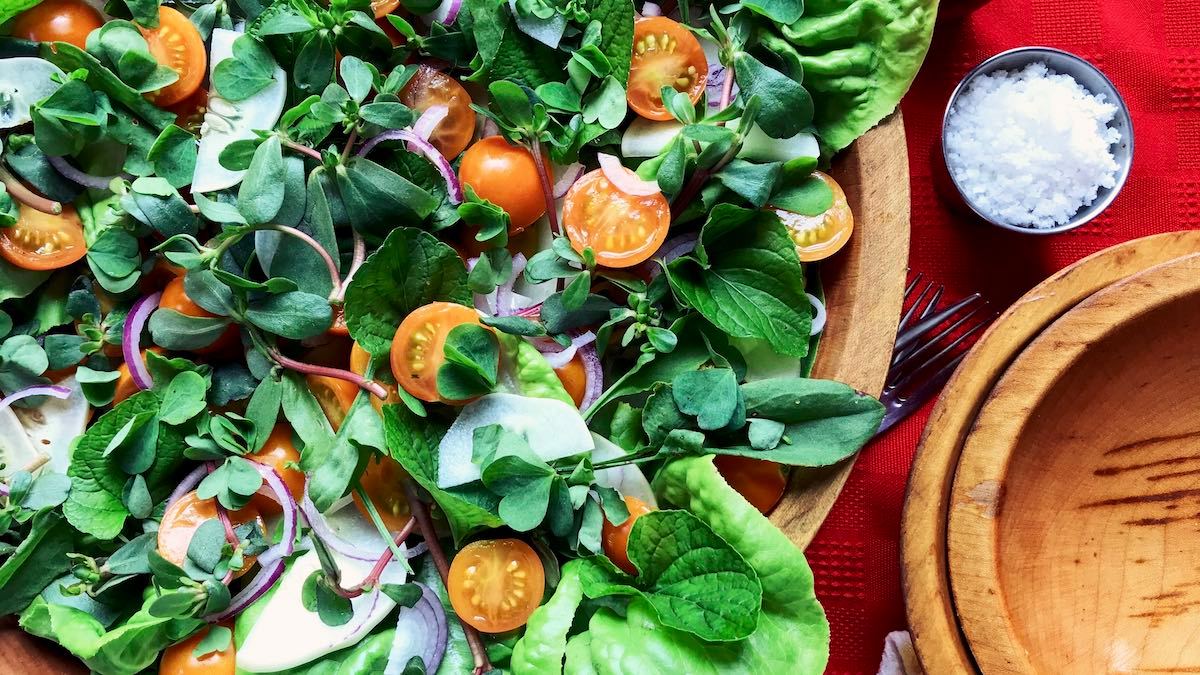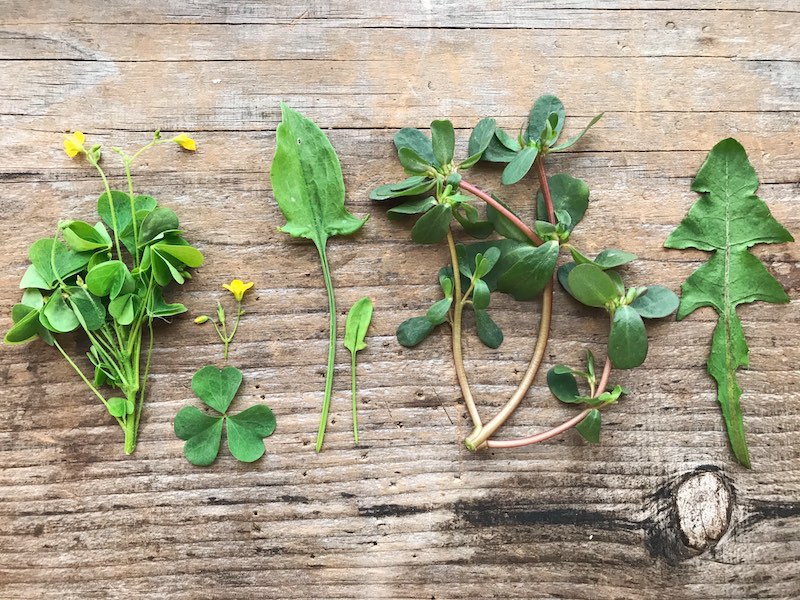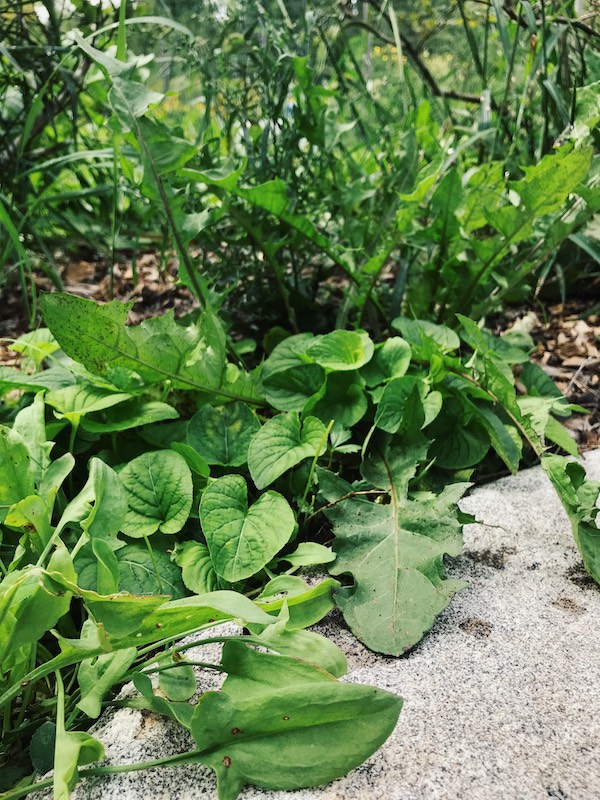
I know—it’s September and all you can think about is the negative space in your freezer and how you’re going to fill it with fresh game. We all have meat on the mind this time of year, but take a second and imagine something with me: It’s February and everything is frozen solid. You haven’t eaten a fresh vegetable in months. Anything green has been trucked in from who-knows-where. Most of your meals have been varying shades of brown with maybe a pinch of green herbs that you can hardly afford. Pretty bleak, right? It’s easy to overlook the bird in hand when you’re daydreaming about the one in the bush.
Winter is coming—now is the time to savor our salads. Whether you’ve already had success this hunting season or you have a few venison steaks left in the freezer, why not honor the animal with a salad as wild as it is?
Wild greens are not the watery lettuce at the supermarket, just as a grouse is not boneless, skinless chicken. There are flavors and nutrients in wild foods that come from being untended, but some people’s palates may not be familiar with these flavors. They may describe them as “bitter” in the same way people who are accustomed to corn-fed beef sometimes describe venison as “gamey.” I’m not going to lie to you and say that dandelions aren’t bitter, because sometimes they are. I would, however, like to present the idea that “bitter” is not synonymous with “bad.”
Our palates recognize bitter as a flavor because we have evolved with it, and over that time together the human mouth has learned that bitter indicates rich phytochemistry in the form of nutrition, medicine, or toxin (or all three depending on the dose). It’s also helpful to remember that our palates are always changing and we can come to love new flavors over time. Most of us probably didn’t like coffee or beer the first time we snuck a sip, but look at us now.
These three plants are regular characters in my yard and salad bowl and are likely right outside your door as well. Dandelion, sorrel, and purslane each bring their own special something to the plate.
Dandelion
Taraxacum officinale (click here for identification) can be bitter, yes, but not unbearably so, and it can be an easy way to liven up your lettuce with a chopped handful. Dandelion is much less bitter in the spring than in summer and fall, but you can find milder leaves if you collect from places where they’ve had the least stress. The lush, green plant next to your compost pile, for example, will taste much milder than the beaten-down survivor in the gravel parking lot. So, while in spring I may make a salad entirely of dandelion greens, in the fall I might treat it as an herb and use it more sparingly.
My favorite way to compliment the bitter flavor, which I have actually come to crave, is to pair it with fat and acid such as a warm dressing of bacon fat and cider vinegar or olive oil, anchovies, and lemon juice.
Sorrel
This plant is almost indisputably delicious. There’s nothing bitter about sorrel, it’s just plain tart. It’s a popular garden crop in many parts of the world and you can find the cultivated variety at some markets in the U.S., but it’s easier and cheaper to look for its smaller cousins growing wild in your yard. There are a few different species, but they all pack the same citrusy punch. The two you’re most likely to find in your yard are yellow wood sorrel (Oxalis stricta) and sheep sorrel (Rumex acetosella).
The tart, lemony flavor comes from oxalic acid, the same thing that makes rhubarb pucker your mouth. You don’t want to eat whole piles of raw sorrel for this reason, especially if you’re prone to kidney stones. Lots of common vegetables, like spinach, also contain oxalic acid, so it’s nothing to be scared of, just use in moderation. I find that a handful of leaves is plenty to add a real zing to any salad, dressing, marinade, or as a garnish for fowl or fish.
It’s often called “lemonade plant” for its sour bite, and it really does make a refreshing lemonade- (or margarita!) style beverage. In my years of teaching, I’ve heard dozens of students recount how they were drawn to sorrel as a child and just had to eat it despite their parents’ warnings. While I don’t recommend eating plants that you haven’t identified, the number of times I’ve heard this story does make me wonder about our innate ability to trust our instincts, and the value of the “nibble and spit” method as a tool in our food-finding toolbox.
Purslane
Portulaca oleracea is a powerhouse of nutrition and crunch that I cannot get enough of. (Click here for identification.) I would eat it just for its massive amounts of Omega-3 fatty acids and antioxidants (it’s reported to have more than any plant on the planet) even if it didn’t taste great. But its bright flavor and snappy texture make it very easy to love.
I recently made a salad of just purslane, kelp, and cucumber that was so addictively crunchy I ate the whole serving bowl’s worth without coming up for air. Some people eat it cooked, but I find the joy is in the crunch and tang in raw form, so I use it almost exclusively in salads or for quick refrigerator pickling.
It’s not quite as prone to show up in your lawn as dandelion and sorrel, but it is listed as one of the most noxious weeds in the world, so if you’ve got a landscaped bed, garden, or even potted peppers on your deck, it’s likely to show up to the party.
Other Wild Salad Greens
If you can’t seem to find these three plants, don’t worry, another edible weed is rarely more than a few steps away. Here are a few more of my salad bowl favorites that are almost sure to be around:
Violet (Viola spp.): the leaves and flowers are both mild-flavored and visually beautiful salad additions.
Chickweed (Stellaria media): the greens are tender and sweet like fresh, raw corn.
Chicory (Cichorium intybus): the leaves look and taste very similar to dandelion.
Wild Mustards (many species): the leaves are pungent like arugula, and the buds, flowers, and young seedpods add a spicy kick.
These plants pop up in backyards, gardens, sidewalks, and flower beds in most every state of this nation, so you’re bound to be within reach of at least one. You won’t have to hike deep into the primeval forest or even to the middle of your lawn to find these—hunt for them where you’d hunt for much of your animal food—the edges. In my yard, I have dandelion, violet, sorrel, and mustard all growing together where the grass meets a mulched bed of blueberry bushes at the treeline. This is a very typical habitat.
I hope you have fun finding these plants and you love their thrift and nutrition as much as I do. If you don’t find their flavors as easy to love right away, don’t stop at salad. They blend beautifully into pesto, green sauce, bouillon, dressing, smoothies, and nutritional powders where you can balance their flavors with garden herbs that you already know and love. We need all of the nutrition we can get if we’re going to keep up with our quarry this season, so go out into the backyard before it’s covered in snow and give flavor a chance!









Conversation